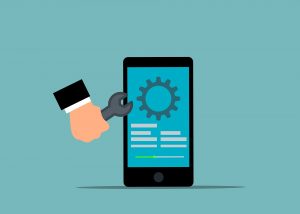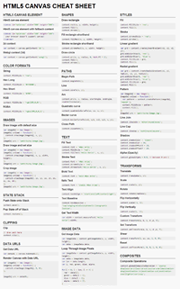Mobile Application Maintenance, Different Types, and Costs
Description

So, you spent months, or maybe years, designing, developing, and testing your mobile app, and finally, it has hit the market! But does the story end there?
We don’t want to dampen your enthusiasm, but the answer is no; it doesn’t end there. It's time for the next phase of the development cycle: mobile app maintenance.
What Is Application Maintenance?
Simply put, application maintenance is the continuous process of analyzing, updating, changing, and improving existing software.
By maintaining your app, you can ensure that it performs flawlessly, doesn’t contain serious bugs, and, most importantly, responds to user expectations and market demands.
Why Is App Maintenance Important for Your Business?
Today, app maintenance cannot be overlooked if you want your business to grow. For further explanation of this statement, just consider the two facts listed below:
- The mobile app market is highly competitive. That is why you must continue offering innovative and unique solutions for your app or risk losing ground to your competition.
- Technology is advancing at an incredible speed. Even if you used the latest technology during development, you can never be sure that it won’t eventually become obsolete.
So, the conclusion is simple: If you don’t want your app to become rusty after a while, you must maintain it consistently.
What Are the Benefits of Maintaining an App Regularly?
A well-planned app maintenance program can provide long-term benefits for your business. Here is why this process should be your number one priority after the app has been released:
- Better user experience. Satisfied user=engaged user. And that is the goal, right? So, ensure the user experience is impeccable, and you will surely build a long-term relationship with them and win their loyalty.
- Increased user retention. Keep in mind that users are annoyed by app errors and obsolete content. These flaws irritate users and frequently lead to the desire to uninstall the app. Make them satisfied by ensuring smooth performance and a seamless app experience.
- Higher return on investment (ROI). If you keep your app updated and adapt it to the users’ expectations and market requirements, your number of users will grow, and so will your sales. In other words, your ROI will increase over time, find ways to attract new users, and cut expenses.
Types of Mobile App Maintenance
Before you even start the maintenance process, it’s worth getting an insight into the main types of app maintenance.
1. Preventive Maintenance
As you can guess from its name, this method implies regularly testing and removing any bugs that could appear.
With preventive maintenance, you will ensure that your code is fully optimized, updated, and secured. It also works on preventing app complexity and making it easier to use.
2. Perfective Maintenance
The user experience is directly related to this aspect. Perfective maintenance means constantly analyzing user behavior and gathering valuable feedback, based on which you will make necessary updates. You can use surveys, user testing, and in-depth interviews.
Your app should always respond to challenging user expectations and requirements. If that is not the case, frustrated users will stop using your app and turn to your competition.
So, always strive for a perfect experience for your users.
3. Adaptive Maintenance
As we already mentioned, the tech industry is constantly developing. What was revolutionary technology yesterday today can be a thing of the past.
Adaptive maintenance means that you need to adapt your app to the latest technological trends. Sometimes this requires not only code adjustments but also a transformation of the software environment, changes to the operating system, or even hardware.
4. Emergency Maintenance
This one looks out for various errors and bugs that may occur and unexpectedly afflict the system. That requires instant intervention to prevent disaster.
Once the problem has been solved, always conduct further testing to verify that the situation is stable.
Another way to avoid this is to regularly scan and analyze your app’s performance and remove any disturbing anomalies.
5. Corrective Maintenance
Corrective maintenance involves fixing residual coding, logic, or design errors. These bugs are usually revealed by users.
How Much Does Mobile Application Maintenance Cost?
Simply put, it is impossible to give an exact answer to this question. Numerous factors directly impact costs. Those factors are, for instance, specific industries, app complexity, the platform on which the app was developed, and more.
Experts say that the average cost in the first year of development is around 50%, and after that period, 15-20% of the total development cost.
Here are the most important factors you need to rethink when it comes to the process of maintaining your application:
- Software complexity — the number of features your app has.
- App development technology — an app with separate codes for iOS and Android is more challenging to maintain than cross-platform apps built with a single code.
- Team size — the number of developers, designers, and analysts needed for maintaining your app.
- Code quality — an app developed on poor code requires more
The average cost includes content generation, buying media elements, promotional activities, graphic design, and more.
The regular costs include new technology integration, code changes, platform upgrades, etc.
Here are some more elements that will affect the total amount:
1. Hosting Prices
App hosting prices play a critical role in app maintenance costs.
First, consider what kind of server you'll need for your app. Depending on the application data type, you can plan out server resources. Extensive data requires more server CPU, storage space, and memory, leading to increased costs.
Cloud-based hosting options like Amazon Web Services are less expensive, as you only pay for what you use, and server maintenance costs are lower.
2. Analytics Costs
Mobile app crashes, bugs, and other glitches must be analyzed and monitored. Besides that, you need to check out your users’ expectations and preferences. For all of that, you can use free tools, but for more detailed and critical insights, there are advanced tools that require investment.
3. Updates and Bug Fixing Costs
Regular updates can quickly fix errors and enhance the UX. The cost of updates depends on various factors, such as the app's size and functionality changes.
For instance, the price would vary depending on whether you needed one quick code change or if it took a couple of weeks.
4. Customer Support Costs
If your users have any complaints, it would be great for them to express their concerns and have a pleasant complaint resolution experience. Customer support could be an ongoing cost, but it will benefit your app with positive reviews.
The more features your app has, the more expensive it will be. Suppose you are an app owner who needs help with maintaining and budgeting. In that case, you can contact a mobile application maintenance service to gain insight into what kind of maintenance your application needs and how much it will cost.
Final Words
If you observe the market, you will notice that the number of mobile apps with excellent user experiences rises daily. Your competition will surpass you if you don’t take steps to improve your app. Therefore, maintaining an app is no longer merely “nice to have”, it is definitely “a must” in the mobile app world.
In this article, we shared standard procedures for app maintenance and planning the costs that go with it. If you follow them, you will be able to achieve your business goals and stay relevant in the game.
 Blog
Design
Development
Mobile
Inspiration
CSS
Javascript
News
Opinions
Politics
Menu
Blog
Design
Development
Mobile
Inspiration
CSS
Javascript
News
Opinions
Politics
Menu
